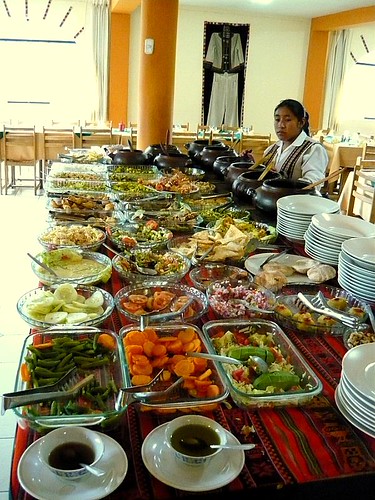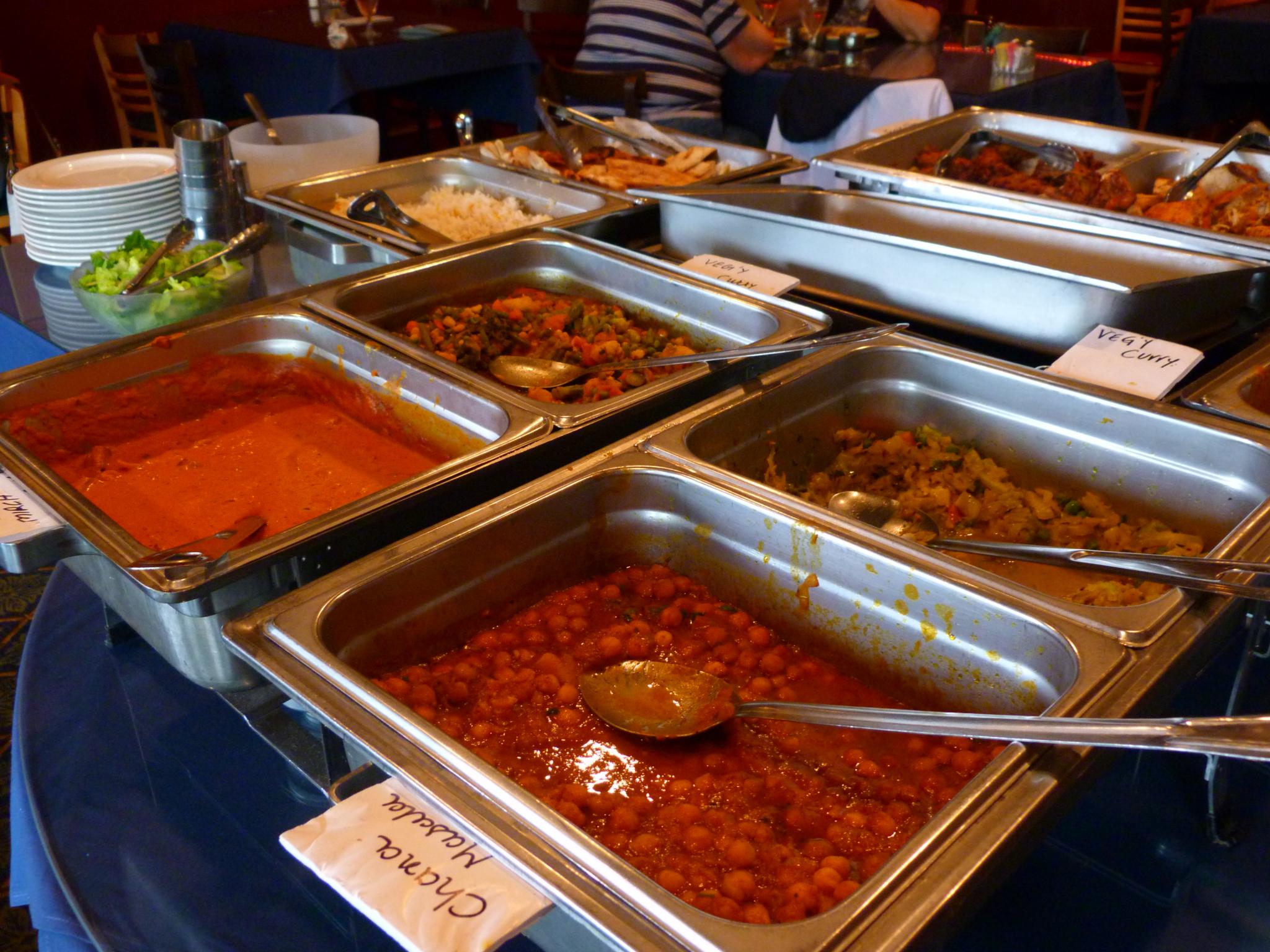
Who can resist the allure of an all-you-can-eat buffet? There’s a certain thrill in plotting your culinary adventure, starting with the pricier options and then exploring a multitude of dishes for one fixed price. It promises a feast without breaking the bank, a seemingly perfect solution for satisfying those hungry cravings. It’s no wonder buffets are experiencing a new surge in popularity, especially with rising costs of living.
However, beneath the gleaming surfaces and tempting aromas, there’s a potential for unseen dangers. The Centers for Disease Control and Prevention (CDC) reports that a staggering 1 in 6 Americans contract a food-borne illness each year, and buffets, by their very nature, present unique challenges for food safety that traditional restaurants simply don’t encounter. Food is left in the open, exposed to temperature shifts, potential contamination from numerous customers, and prolonged sitting times. While a traditional restaurant keeps food preparation under tight control, buffets inherently put food out in the open.
While diners certainly have a role in maintaining hygiene, the fundamental responsibility for food safety rests squarely on the restaurant to maintain proper standards and protocols. Identifying a single concerning sign might not warrant immediate alarm, but when multiple red flags begin to appear, it’s a strong indication that you should seriously reconsider where you’re dining. Knowing what to look for can truly save you from a very uncomfortable aftermath to your all-you-can-eat experience, turning a potential health hazard into a safe and enjoyable meal.
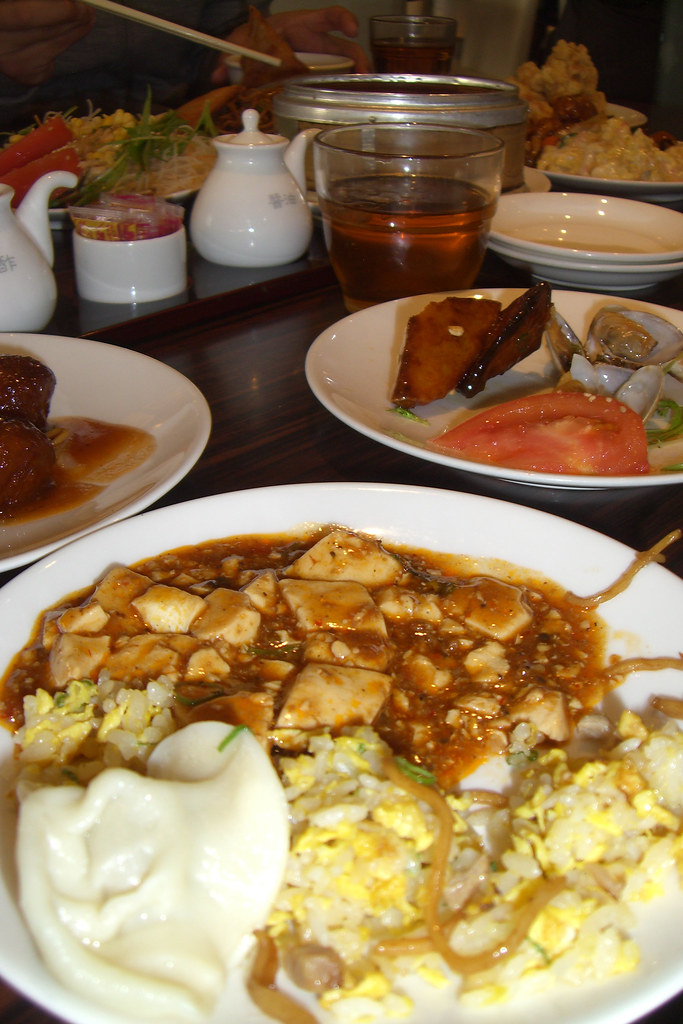
1. **Staff Vigilance and Hygiene**Think a buffet means no need for staff? Think again. The servers at a buffet actually play a crucial role in food safety, and how they behave can reveal a lot about what’s happening behind the scenes. Buffets come with higher food poisoning risks than traditional restaurants, which is why good places keep their standards extra high. The FDA recommends at least one server should be monitoring the buffet at all times.
These folks aren’t just clearing your dirty plates. They’re keeping an eye on how customers handle the food, tracking how long dishes have been sitting out, watching for cross-contamination, cleaning up spills quickly, and swapping out serving utensils regularly. Look for servers who seem alert and on top of things. Are they actively watching the buffet area or just hanging out by the kitchen door? Their proactive engagement is a key indicator of the restaurant’s commitment to safety.
Good servers will be wearing clean gloves and changing them frequently between tasks. Their uniforms should be spotless, with no food stains or mysterious splatters. This attention to personal cleanliness usually reflects how they treat the food, too. A clean, attentive server indicates a general culture of hygiene and careful handling throughout the establishment.
The overall vibe of the staff tells you volumes about a restaurant’s safety culture. If servers seem frazzled, if nobody’s monitoring the food, or if the whole operation feels chaotic, that’s a pretty solid clue that food safety isn’t their top priority. Remember, what happens out front usually reflects what’s happening in the kitchen. Calm, attentive servers typically mean a well-run kitchen that takes food safety seriously.
Food service workers can easily transmit viral pathogens without realizing they’re infected. Many food-borne pathogens have a remarkably low infective dose, meaning even a tiny amount can make customers sick. Proper glove usage creates an important barrier between these potential pathogens and the food customers consume. Gloves should be changed at least every four hours, even when performing the same task, as this timeframe gives bacteria enough time to multiply to dangerous levels.
More importantly, gloves must be changed between different tasks to prevent cross-contamination. A red flag to look out for is seeing staff touch their face, hair, clothing, or phone while wearing gloves and then continuing to handle food. Another warning sign is servers who handle raw ingredients and then ready-to-eat foods without changing gloves in between. Staff should never handle money or clear dirty dishes wearing the same gloves they use for food service. The proper protocol requires servers to wash their hands thoroughly before putting on a new pair of gloves, a crucial step to prevent pathogen transfer.
Read more about: Behind the Counter: 13 Fast-Food Secrets That Expose Unsanitary Truths About Your Quick Meals
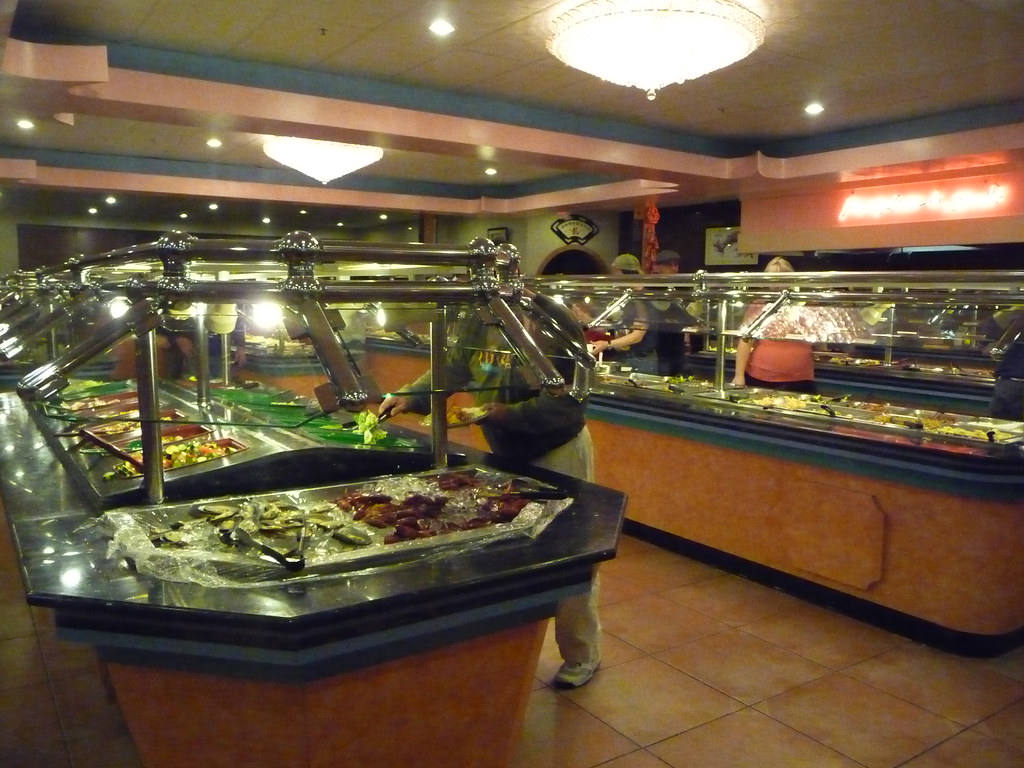
2. **Utensil Management**A well-run buffet maintains a strict one utensil per dish policy without exception. This is crucial to prevent cross-contamination between the different dishes, ensuring that allergens and pathogens are not inadvertently spread. Quality buffets keep an ample supply of clean replacement utensils ready at all times. Staff should be vigilantly monitoring the serving stations, quickly swapping out any utensil that has touched a contaminated surface, fallen into the food, or been used to mix a dish.
When a serving spoon or tong handle becomes submerged in food, it creates a pathway for bacteria to transfer from hands to the entire dish. The type of utensils provided also matters. Unfortunately, some restaurants try to cut corners by providing shorter utensils, ostensibly to limit portion sizes, but this can increase contamination risks as hands come closer to the food, leading to unintended contact with the food itself.
Despite the best efforts of restaurant staff, fellow diners pose one of the biggest contamination risks at any buffet. While employees receive food safety training, the general public often demonstrates concerning behaviors. Without adequate utensils readily available, some customers might grab food with their hands, use the wrong utensil, or return a dropped utensil to a dish. A conscientious buffet anticipates this by ensuring proper utensils are always available and correctly positioned, making it easy for customers to do the right thing.
Before filling your plate, take a moment to assess the utensil situation. If you notice missing utensils, shared utensils between dishes, or handles submerged in food without staff intervention, consider these significant red flags regarding the overall food safety standards of the establishment. Each pan of food should have its own dedicated set of (clean!) tongs, ladles, serving spoons, or other serving utensils. Furthermore, these utensils should actively be “in the product with the handle sticking out” rather than propped up against the pan or lying on the counter, a measure against bacteria or other pathogens lurking on surfaces.
Read more about: 15 Essential Household Items You Should Replace Annually (Or Sooner!) for a Healthier Home
3. **Temperature Control**Temperature control stands as one of the most critical safety factors at any buffet. Food safety experts identify the range between 40 F and 140 F as ‘the danger zone’ where harmful bacteria multiply most rapidly. At optimal growth temperatures around 98 F (coincidentally human body temperature), bacteria like salmonella, E. coli, and staphylococcus aureus can double in number every 20 minutes. Maintaining a temperature of 140 degrees Fahrenheit or higher for hot food and 40 degrees Fahrenheit or lower for cold food staves off bacterial growth, as bugs flourish best in the interval between those two points.
Hot foods should maintain temperatures of at least 140 F, typically achieved through properly functioning chafing dishes, slow cookers, heat lamps, or warming trays. Watch for visual cues that hot food is actually hot, such as steam rising from dishes, bubbling sauces, or heating elements that are clearly activated. If food looks dried out or has a film on top, it has likely been sitting at inadequate temperatures for too long, indicating potential bacterial growth.
Cold foods require temperatures below 40 F. Quality buffets accomplish this by displaying cold items in ice baths or using refrigerated cases. Dairy products, seafood, and meat are particularly vulnerable to temperature abuse and require vigilant monitoring. A refrigeration unit or bed of ice can help cold food retain its chill effectively. What’s more, there should be either live temperature monitoring or evidence that the staff is taking temperatures regularly, perhaps with a food thermometer, to ensure consistent safety.
Well-managed buffets serve food in small batches that are frequently replaced rather than continuously topped off. This ensures food spends minimal time in the danger zone. Large, full trays that remain unchanged throughout service suggest food has been sitting too long at potentially unsafe temperatures, increasing the risk of foodborne illness. Before adding anything to your plate, take a moment to assess whether hot foods are genuinely hot and cold foods are properly chilled. Properly maintained temperatures remain the most reliable indicator of a buffet’s commitment to food safety.
Read more about: Vanishing Legacies: An Expert’s Guide to 14 Iconic Concepts of Extinction in Earth’s History

4. **Food Freshness and Rotation**Spotting a sign that limits buffet service to just two hours might initially seem inconvenient, but it is actually a good sign. When a restaurant keeps its buffet to a tight window, it’s usually showing it cares about keeping food safe to eat. Food safety standards specify that perishable foods should not remain at room temperature for more than two hours. This guideline isn’t arbitrary but based on microbial growth patterns. After two hours at room temperature, harmful bacteria can multiply to dangerous levels, making the food unsafe. Two hours is the typically accepted limit for non-temperature-controlled items, while one hour is best if the ambient temperature is higher than 90 degrees Fahrenheit, since intense heat speeds up deterioration and spoilage.
Several visual cues can help determine how long food has been sitting out. Fresh food typically maintains vibrant colors, while items that have been out too long often appear dried out, discolored, or develop a film on top. Sauces and gravies may show signs of separation or skin formation. Foods like lettuce wilt, fried items become soggy, and once-crisp vegetables turn limp. As food ages and dries out, “it’s going to be less desirable or less palatable,” which means there’s “a safety part of it, but there’s also that quality part of it as well.”
Good buffet spots that stay open longer have proper ways to keep food safe. These include using smaller serving containers that are completely replaced rather than topped off, strict temperature monitoring, and designated staff responsible solely for rotating food. Even if temperature control measures are in place, the food in the buffet lineup should still be constantly refreshed to cut down on safety risks. Staff should be bringing out new batches and removing old ones on a frequent basis, ensuring that everything you select is as fresh as possible.
Read more about: Grabbing Lunch? 14 Sandwich Shops We’re Definitely Bypassing for Freshness and Flavor.

5. **Food Topping-Off Practices**You’ll know you’re in trouble when you see staff dumping fresh food right on top of the crusty remains that have been sitting out forever, then giving it a lazy stir until everything mushes together. This isn’t just gross, it’s a huge red flag that they don’t care about health codes, and who knows what other corners they’re cutting. As Dr. Detwiler, a food safety expert, states, whenever he sees a buffet employee dump a new batch of food on top of the remnants of the last (or scrape the remnants into the new batch), “it blows my mind.”
Here’s why this matters: Old food sitting out can be loaded with nasty bacteria like salmonella and E. coli. When they mix it with fresh stuff, they’re basically spreading those germs to perfectly good food. Mingling multiple batches not only extends the amount of time the old stuff will be hanging on, which, as we’ve already established, increases the risk for bacteria, but it also infects the new stuff with any bacteria that have already started to grow in the older batch. This creates a continuous cycle of contamination.
Some foods are especially risky when mishandled, stuff like sprouts, leafy greens, rice, soft cheeses, lunch meats, chicken, and all seafood. These need extra careful handling to stay safe, as they are prime breeding grounds for bacteria if not properly managed. One of the nasty strains of bacteria that loves hanging out in food that’s been sitting out for too long is *Clostridium perfringens*. Catch this bug and you won’t throw up, but you’ll spend about 10 hours with stomach cramps, nausea, and diarrhea. Not exactly the souvenir you want from your buffet visit.
This practice violates one of the cardinal food safety rules: first in, first out. Really, “whatever’s left, they should throw it out,” according to food safety expert Martin Bucknavage. Using smaller containers rather than bigger ones can help reduce the corresponding food waste, as Dr. Detwiler points out, while also ensuring fresher food for everyone by making complete replacements more feasible and frequent. This simple change in practice significantly lowers health risks.
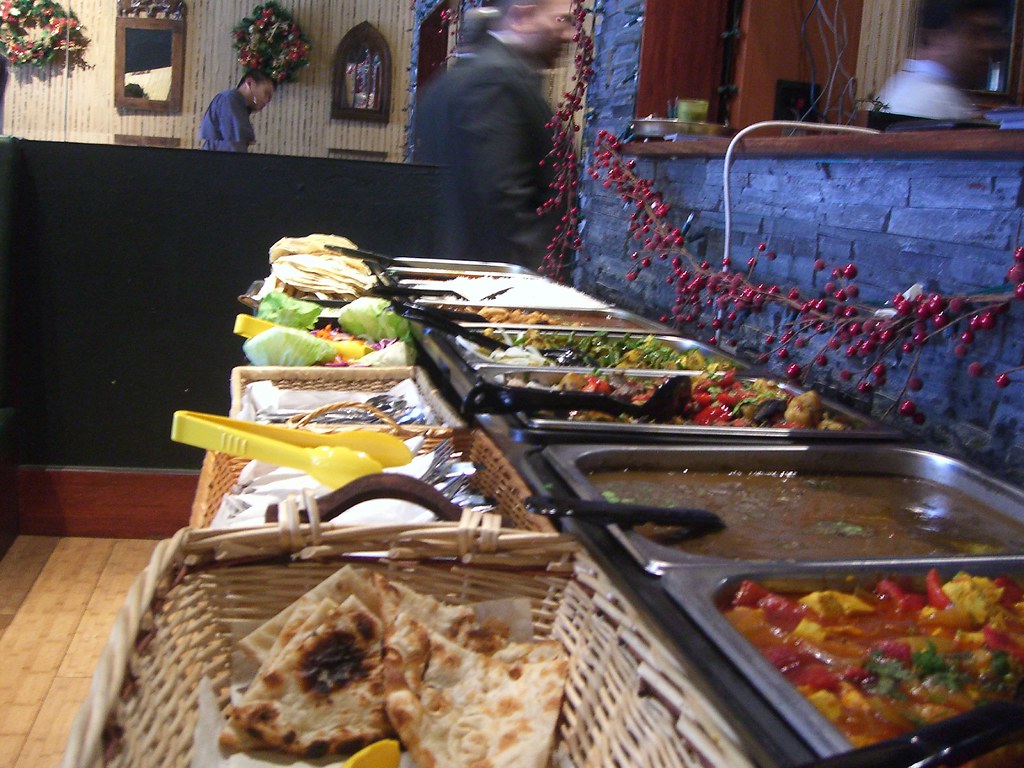
6. **Plate Availability and Usage**Using the same plate for seconds at a buffet might seem helpful—fewer dishes to wash, right? Wrong. This common mistake actually breaks important FDA guidelines. Good buffets make sure you don’t do this, either by having staff remind you, or by putting up signs. Restaurants can even lose points on health inspections if they don’t enforce clean plate usage, highlighting the seriousness of this seemingly minor detail.
Using the same plate for seconds at a buffet might seem helpful—fewer dishes to wash, right? Wrong. This common mistake actually breaks important FDA guidelines. Good buffets make sure you don’t do this, either by having staff remind you, or by putting up signs. Restaurants can even lose points on health inspections if they don’t enforce clean plate usage, highlighting the seriousness of this seemingly minor detail.
A decent buffet will always have plenty of clean plates ready to go, usually stacked right at the beginning of the food line. Keep an eye on how they handle busy times; if they’re constantly running out of clean plates or don’t seem to care when people reuse plates, that’s a pretty good clue they’re cutting corners on other safety rules, too. The FDA food code requires clear signs telling you to grab a clean plate for your second helping. It’s not just a courtesy thing; this is actually a serious food safety rule designed to protect public health.
While it might feel more natural—even eco-conscious—to take your original plate back to the buffet for another helping rather than stop to replace it with a fresh one, it raises significant concerns about cross-contamination. Even if it’s nothing more than a graze, “you’re inevitably going to be touching your used plate with a [shared] utensil”—a utensil that is then returned to the main pan of food, imbuing it with whatever was on your plate to begin with, like saliva or food scraps. This risk is precisely why fresh plates are non-negotiable for return trips to the buffet line.
Read more about: Ranking 10 EV Battery Packs: Which Brands Retain Nearly 80% Capacity After 10 Years?
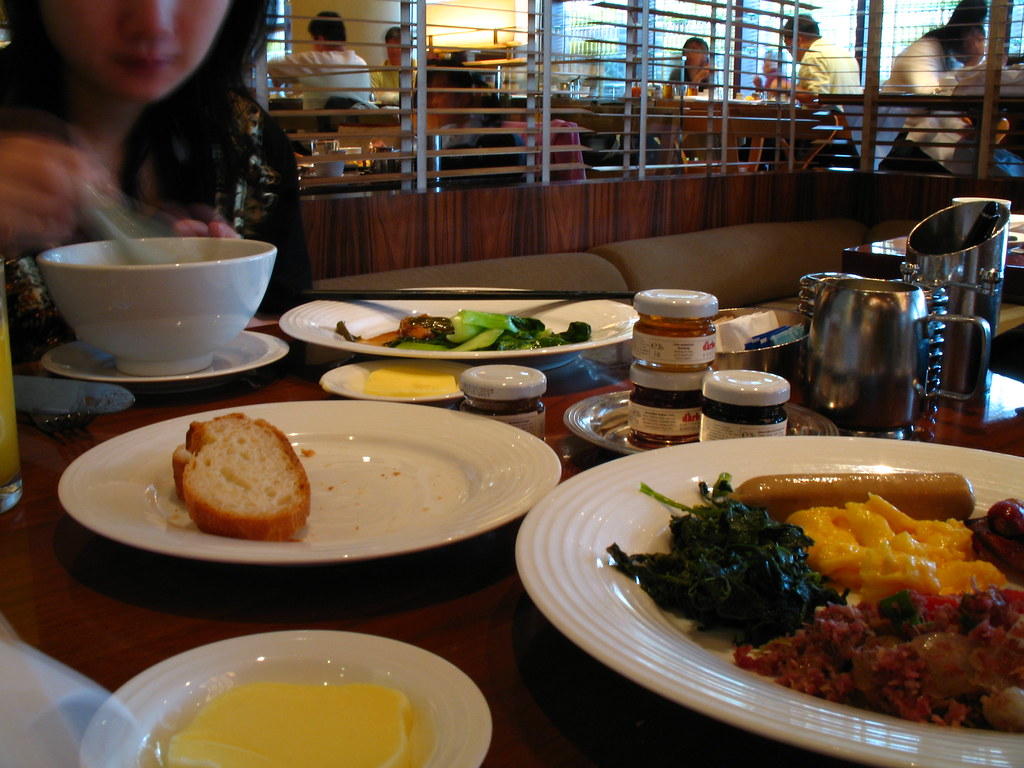
7. **Clear Signage**A good buffet should be well signed. According to FDA guidelines, buffets need three types of signs at minimum to meet basic requirements. Firstly, there should be clear signs telling you to grab a clean plate for your second helping. It’s not just a courtesy thing; this is actually a serious food safety rule intended to prevent the spread of bacteria. Without this, customers might unknowingly compromise food safety for themselves and others.
Second, anywhere they’re serving raw stuff like meat, eggs, fish, or shellfish, they need warning signs about the risks of consuming these items. This is crucial for vulnerable populations or those with specific health concerns. And third, those cereal dispensers and other bulk foods? They should either show the manufacturer’s label or have a list of ingredients and allergens available for anyone who asks. If these basics are missing, you’re dealing with a place that’s ignoring FDA rules. And let’s be real, if they’re skipping these simple requirements, what else are they letting slide?
Some really good buffets go beyond the minimum. They’ll post friendly reminders like ‘Please use tongs provided’ to stop folks from grabbing food with their hands (we all know that one person who does this). Others have signs asking parents to supervise young children at the buffet, which addresses another common source of contamination. These extra touches show management that actually cares about keeping everything safe and clean, fostering a more hygienic and pleasant dining environment for everyone. Before loading your plate, take a quick scan of the signage. Those little placards tell you a surprising amount about how seriously a buffet takes both food safety and customer care.
Navigating the buffet line isn’t just about finding your favorite dishes; it’s about making informed choices that protect your health. While Section 1 covered crucial early warning signs related to staff practices and food handling protocols, our journey into safer buffet dining continues. We’ll now delve deeper into environmental cleanliness, the visible quality of the food itself, critical structural safeguards, the often-overlooked impact of fellow diners, and the vital role of external restaurant ratings in helping you make a truly safe choice.
Read more about: Spill the Beans: 11 Annoying Habits Service Workers Wish You’d Quit Right Now!

8. **The Food Looks (and Smells) Off**Trusting your senses is one of your most powerful defenses against unsafe buffet food. Before you even think about putting something on your plate, take a good, hard look and a quick sniff. Use your common sense and don’t be too forgiving about the quality of what’s on offer. If anything appears suspicious in its look, texture, or smell, it’s a significant indicator that it might have been mishandled or sitting out for far too long.
Visual cues can tell you a surprising amount about a dish’s freshness. If hot food looks dried out, has a noticeable film on top, or sauces and gravies show signs of separation, these are classic indicators of prolonged exposure to inadequate temperatures. Similarly, for fresh produce, wilted lettuce, limp vegetables, or soggy fried items are signs that the food has lost its prime, affecting both its palatability and its safety. These changes suggest that the “quality part” of food has declined, often hand-in-hand with potential safety issues.
Beyond sight, pay close attention to the texture and smell. Crusty edges on dishes might seem minor, but they loudly proclaim that an item has been sitting out way past its safe consumption window. Watch out for a slimy film on deli meats, which isn’t a fancy glaze but a tell-tale sign of bacterial growth. And never, ever ignore an off smell; if fish or meat has a sour or ammonia-like odor, that’s your cue to simply walk away, as no amount of hunger is worth that inherent risk to your well-being.
As food safety expert Martin Bucknavage says, “If anything does not look right, don’t eat it.” Even if you’re 90% confident it might be okay, why chance a painful bout of digestive distress? Especially for vulnerable individuals like young children, the elderly, or pregnant individuals, the consequences of consuming compromised food can be severe. It’s always better to err on the side of caution when your health is on the line.

9. **Lack of Proper Sneeze Guards and Covered Food**Those transparent shields protecting buffet food are not mere decorative elements; they are, in fact, federal requirements for a very good reason. Sneeze guards create a crucial physical barrier between customers and the food, effectively preventing contamination from airborne particles, whether from a cough, a sneeze, or even just talking. Tiny droplets released during these actions can carry germs like *Staphylococcus aureus* that, once transferred to food, can multiply and produce toxins leading to illness.
A properly designed sneeze guard extends beyond the edge of the food container and is positioned at the correct height to block the direct path between a typical person’s mouth and the food below. It should cover the entire length of the food display without any noticeable gaps or missing sections. Be wary of buffets where sneeze guards are too high to be effective, too short to cover adequately, or positioned at awkward angles that fail to shield the food correctly. Dirty, smudged, cracked, or broken guards are also significant red flags, suggesting that the establishment neglects basic safety measures.
Equally important, and a frequent concern cited by experts like Martin Bucknavage, is the necessity for all buffet pans to be covered. By acting as a physical barrier, covers ensure that there’s no opportunity for dust, dirt, hair, mucus, saliva, or even errant children’s fingers to get into the product. This simple measure is fundamental in preventing various forms of environmental contamination, keeping your food pure and safe from external threats.
Beyond the physical barriers, observe how customers interact with them. Unfortunately, some diners find ways to bypass these protections, reaching around or under sneeze guards, leaning over barriers, or allowing children to duck beneath them. A quality buffet with a genuine commitment to food safety will have staff actively monitoring and gently correcting such behaviors, reinforcing the importance of these structural safeguards for everyone’s health.

10. **Questionable Overall Cleanliness**Before you even think about picking up a plate, take a moment to perform a quick visual scan of the entire restaurant space. A buffet’s commitment to hygiene extends far beyond just the food containers themselves. Look for obvious signs of neglect: sticky floors, residue on tables, smudges on windows, or dirty glassware. Even the appearance of staff uniforms, if stained or unkempt, can reflect a broader lack of attention to cleanliness protocols.
Pay close attention to any unusual or unpleasant odors. Musty smells, lingering bleach (often used to mask other smells), or sour scents frequently signal poor cleaning practices. Most critically, scrutinize the food stations themselves. They should be free from splatters, old food debris, or any visible grime. If these public-facing areas are visibly unclean, it raises serious questions about the unseen areas, like the kitchen, where much of the food preparation occurs.
A quick detour to the restroom before you fill your plate can provide invaluable insights into a restaurant’s overall standards. As Dr. Detwiler aptly describes, bathrooms are “a canary in the coal mine” for food safety. Spotlessly clean facilities, consistently stocked with hand soap and toilet paper, reflect a management team that truly sweats the details. Conversely, grimy sinks, mysterious puddles, or empty soap dispensers are alarming indicators that basic hygiene protocols are lacking, which has direct implications for staff and customer handwashing—a major factor in preventing pathogen transmission.
Finally, consider the lighting. Suspiciously dim restaurants might not just be going for ambiance; they could be attempting to conceal cleanliness issues. The FDA food code actually requires food service areas to have illumination of at least 215 lux, approximately the brightness of a living room. Proper lighting is essential not only for customers to see what they’re eating but also for staff to effectively clean and monitor surfaces. If multiple cleanliness red flags appear, the safest and most empowering choice you can make is simply to find somewhere else to eat.
Read more about: Customizers Be Wary: 14 Types of Paint Jobs You Should Seriously Think Twice About Choosing for Your Ride

11. **Servers Not Wearing or Changing Gloves Properly**While we touched on staff vigilance in Section 1, the proper use of gloves by food service workers warrants a deeper dive, as it’s a distinct and critical line of defense. Food service workers can inadvertently transmit viral pathogens without even realizing they are infected. Many foodborne pathogens have an incredibly low infective dose, meaning just a tiny amount can cause significant illness. Proper glove usage establishes a vital barrier between these potential pathogens and the food consumers will eventually enjoy.
However, simply wearing gloves is not enough; the protocol around changing them is paramount. Gloves should be changed at least every four hours, even if the worker is performing the same task, because bacteria can multiply to dangerous levels within that timeframe. More critically, gloves must be changed between different tasks to prevent cross-contamination. This means a server handling raw ingredients absolutely must change gloves before touching ready-to-eat foods. It’s also a major red flag if staff touch their face, hair, clothing, or phone while wearing gloves and then continue to handle food.
Furthermore, servers should never handle money or clear dirty dishes while wearing the same gloves they use for food service. The correct procedure demands that servers thoroughly wash their hands *before* putting on a new pair of gloves, a crucial step often overlooked. Contaminated hands can transfer pathogens to the outside of clean gloves during application, rendering the glove useless as a barrier. Keep a keen eye out for staff who skip this essential handwashing step.
Conscientious buffet establishments will also have fresh boxes of gloves readily available at various stations, encouraging frequent and proper changes. If gloves become torn or visibly soiled, or if a worker is interrupted during their task, those gloves must be discarded immediately and replaced after proper handwashing. The diligence (or lack thereof) in glove protocol speaks volumes about a restaurant’s overall commitment to food safety and its understanding of pathogen transmission.
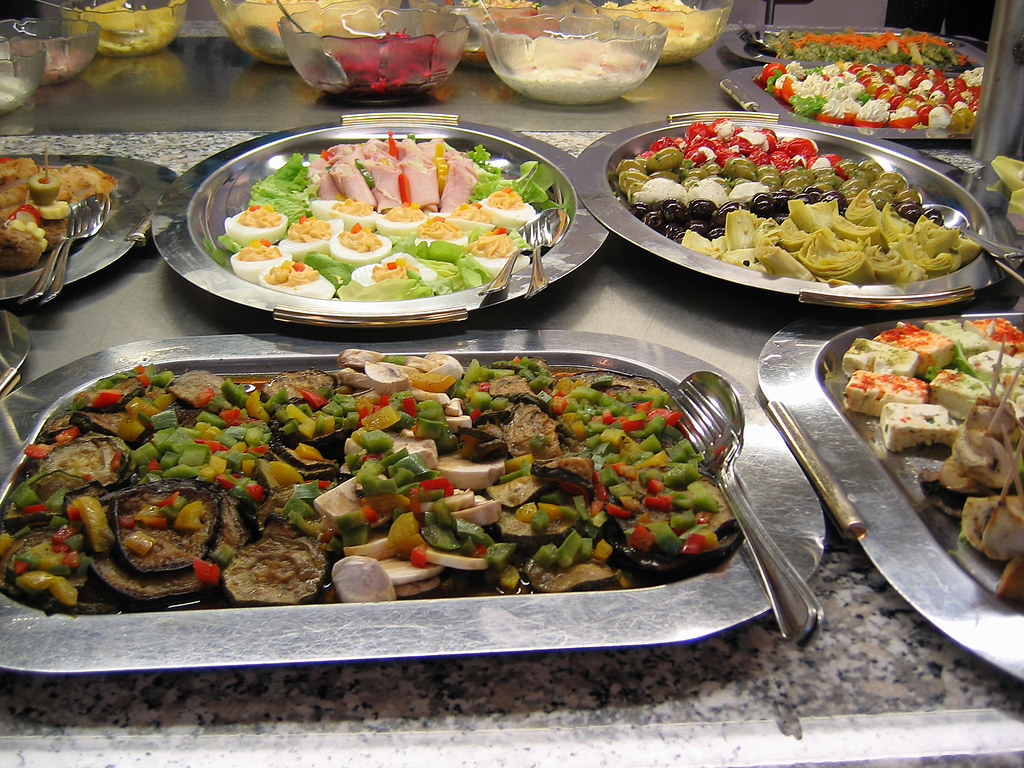
12. **Unsupervised Children and Other Patrons’ Behaviors**While children are a delight, a buffet environment can quickly become a “food safety disaster waiting to happen” if young ones are left unsupervised. Kids, though innocent, are not known for their impeccable hygiene or their sophisticated understanding of cross-contamination risks. Dr. Detwiler himself states, “I’m not going to get food that I’ve seen little kids around” if they’re allowed to serve themselves due to risks like “runny noses and dirty hands and grabbing of food.” Their direct interaction with food, especially without supervision, significantly increases the risk of spreading germs to common serving areas.
Beyond children, the behavior of other adult patrons also plays a significant role in buffet safety. Direct skin-to-food contact, such as using hands instead of serving utensils, is a major concern. As food safety experts emphasize, utensils are there for a reason, whether for a cookie or corn on the cob. Shared serving utensils, or utensils left propped against the pan rather than within the food with the handle sticking out, create pathways for bacteria to transfer from hands or surfaces into the dishes.
Another common and problematic behavior is reusing plates for additional servings. While it might feel eco-conscious or natural, taking your original plate back to the buffet line is a significant cross-contamination risk. Even a slight graze means you’re inevitably touching a shared utensil with your used plate, which then returns to the main pan of food, potentially introducing saliva or food scraps. This is precisely why the FDA food code requires clear signs telling you to grab a clean plate for your second helping, and why conscientious buffets enforce this rule.
Ultimately, the presence of staff monitoring the buffet line, ready to gently correct these behaviors, is a positive sign. Their role is not just to refill pans but also to manage the space, preventing these types of “food safety failures.” If you observe widespread disregard for hygiene from fellow diners without staff intervention, it’s an indication that the restaurant may have given up on enforcing basic safety etiquette, leaving patrons vulnerable.
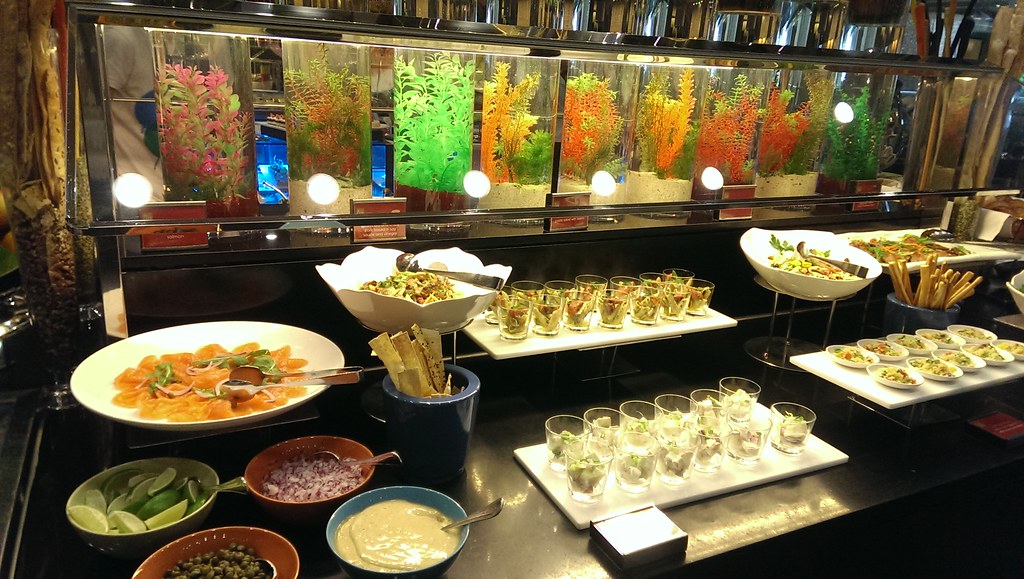
13. **Low Restaurant Health Grades or Bad Reviews**Before you even step foot into a buffet, there’s a super simple and highly effective way to assess its safety: check its food safety grade. Some cities and states, like New York, mandate that restaurants display their health grade prominently in the window. In other areas, you might need to quickly look it up online. This brief check can save you days of discomfort. An ‘A’ grade signifies that the establishment maintains excellent food safety standards with minimal or no concerns, indicating a tight ship.
A ‘B’ grade isn’t necessarily a deal-breaker. This common rating typically means there were some minor violations that require fixing, but the restaurant should still be safe to dine in. Savvy diners can often check online to see the specific violations and decide if they are concerning enough to alter their plans. However, if you encounter a ‘C’ grade, that is a huge red flag that should prompt you to find another dining spot immediately. A ‘C’ grade indicates serious violations that were not only found but, more alarmingly, were not corrected, signaling a management team that is complacent about food safety.
Beyond official health grades, online reviews can also offer valuable insights. While a single bad review might stem from a personal vendetta, multiple low ratings or recurring complaints about cleanliness, service, or food quality should not be ignored. As Martin Bucknavage advises, “reviews will give you a pretty good indication about a spot” if there are enough of them. These collective observations can highlight systemic issues that official inspections might not capture on a single visit.
Both food safety experts, Dr. Detwiler and Martin Bucknavage, emphasize the importance of these external indicators. They empower you to make an informed decision before committing to a meal. If a restaurant consistently receives low grades or a barrage of negative reviews, it’s a strong signal that the “perceived economic value of going to a buffet to eat” is simply not worth the potential toll on your health. Don’t be afraid to use these readily available resources to protect yourself and your family.
Read more about: Hold Up, Millennials! Gen Z Is Here to Spill the Tea on the 15 ‘Cheesy’ Habits and Buys That Just Don’t Land Anymore
Ultimately, the choice to enjoy a buffet comes with a responsibility to be an informed diner. While the allure of endless options and fixed pricing is undeniable, a keen eye and an understanding of these red flags can transform a potentially risky experience into a truly safe and enjoyable one. By actively observing staff behavior, environmental cleanliness, food quality, and even the actions of fellow patrons, you empower yourself to make better decisions. Remember, your health is priceless, and no meal is worth compromising your well-being. So, go forth and feast wisely, knowing you have the tools to spot a safe buffet from one you might want to politely skip.

